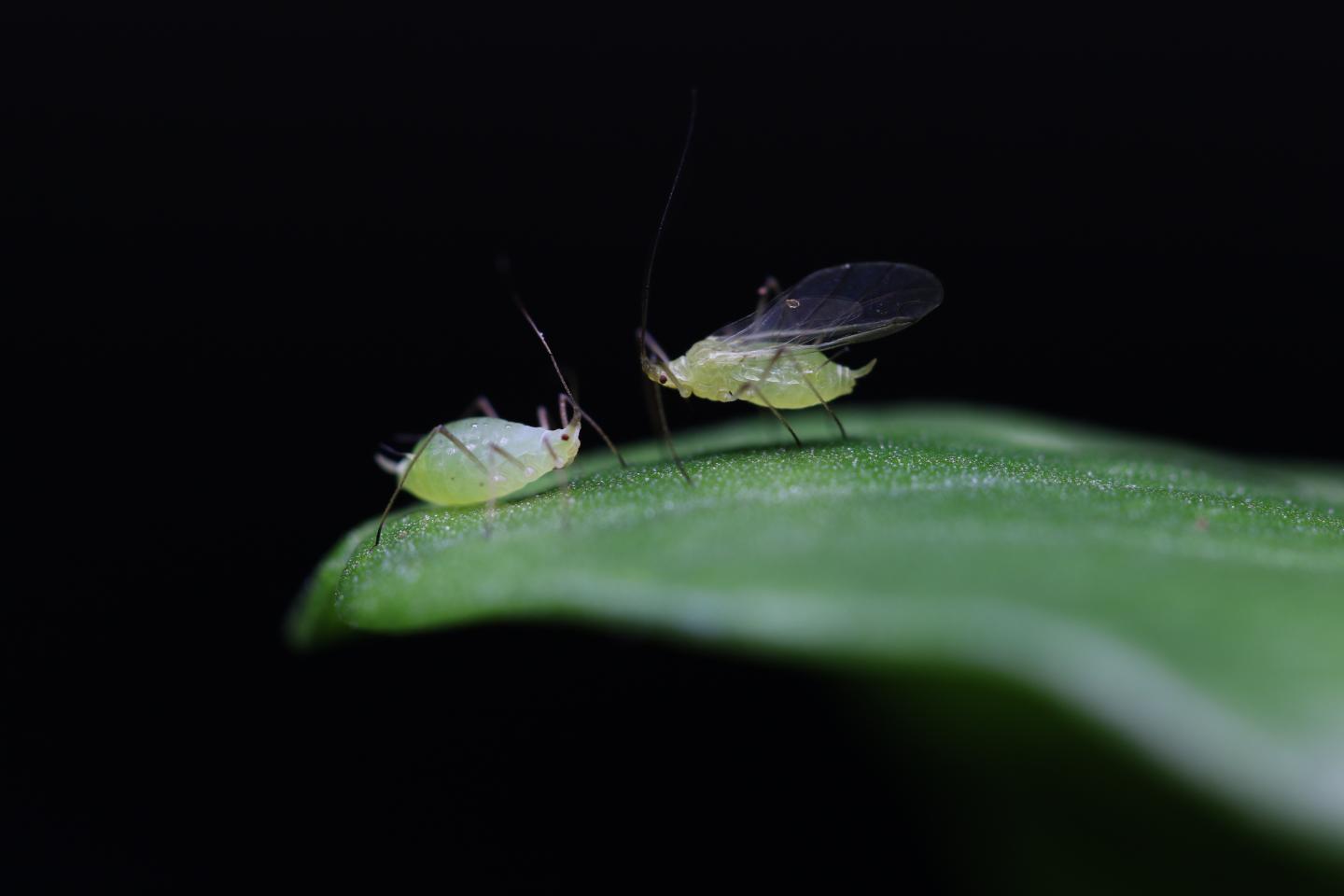
Credit: University of Rochester photo / Omid Saleh Ziabari
Many of an organism’s traits are influenced by cues from the organism’s environment. These features are known as phenotypically plastic traits and are important in allowing an organism to cope with unpredictable environments.
But what are the genetic mechanisms underlying these traits?
Jennifer Brisson, an associate professor of biology at the University of Rochester, and her former postdoctoral student Benjamin Parker, now an assistant professor of microbiology at the University of Tennessee, studied phenotypically plastic traits in pea aphids and uncovered, for the first time, genes that influence whether aphids produce wingless or winged offspring in response to their environment. In a new paper in the journal Current Biology, the researchers shed light on how phenotypically plastic traits evolve and address critical questions about the evolution of environmentally sensitive traits.
Pea aphids are insects that reproduce rapidly and typically give birth to offspring that do not have wings. As many gardeners know, aphids can quickly overwhelm and kill the host plants on which they live and feed. When an environment becomes too crowded with other aphids, the females begin producing offspring that have wings, rather than the typical wingless offspring. The winged offspring can then fly to and colonize new, less crowded plants.
“Aphids have been doing this trick for millions of years,” Brisson says. “But some aphids are more sensitive to crowding than others. Figuring out why is key to understanding how this textbook example of phenotypic plasticity works.”
The researchers used techniques from evolutionary genetics and molecular biology to identify genes that determine the degree to which aphids respond to crowding. Surprisingly, the genes they uncovered are from a virus that then became incorporated into the aphid genome. The virus, which is from a group of insect viruses called densoviruses, causes its host to produce offspring with wings. Researchers believe the virus does this in order to facilitate its own dispersal. As Brisson and Parker found, the gene from the virus retained the same function of producing winged offspring even after it was transferred and incorporated into the aphid genome.
“This is a novel role for viral genes that are co-opted by the genome for other purposes, like modulating plastic phenotypes,” Parker says. “Microbial genes can become incorporated into animal genomes, and this process is important to evolution.”
Most laterally transferred DNA–DNA that is inherited from other organisms, like viruses–is not expressed by its hosts because it is quickly inactivated or eliminated. However, there are examples in most organisms–even humans–where genomes co-opt genes laterally; in humans, for instance, the gene that creates a membrane between the placenta and the fetus was co-opted from a retrovirus.
Brisson and Parker found a clear case in which genes from outside an organism were co-opted by the organism’s genome to modify the strength of a plastic response to environmental cues. Microbial genes like those from viruses can, therefore, play an important role in insect and animal evolution, Brisson says. “Even in ancient traits like the one studied here, new genes can start to play a role in shaping plastic traits and can help organisms cope with an unpredictable world.”
###
Media Contact
Lindsey Valich
[email protected]
Original Source
https:/





